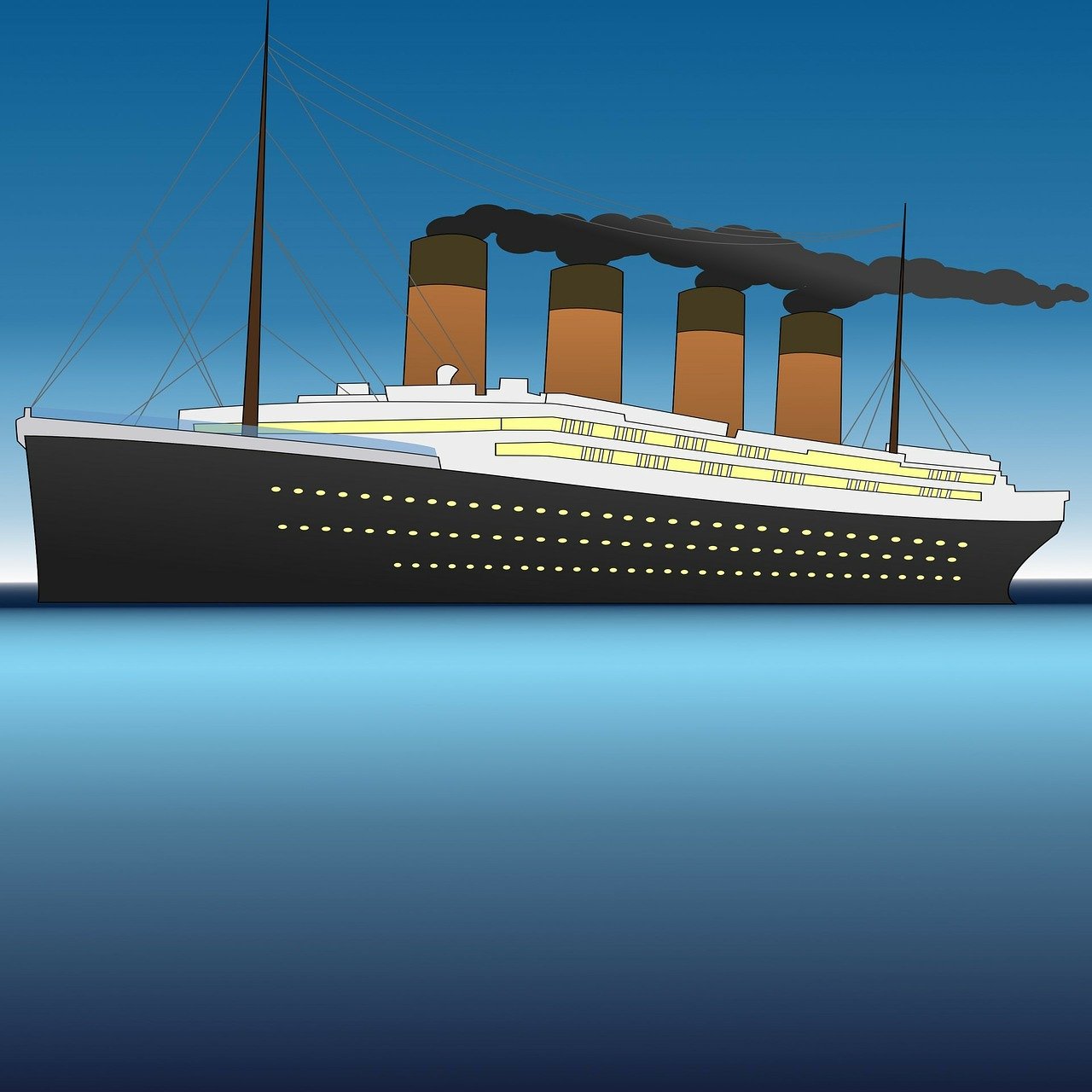The sinking of the RMS Titanic on April 15, 1912, remains one of the most infamous and tragic events in maritime history. The colossal ocean liner, touted as “unsinkable,” struck an iceberg on its maiden voyage from Southampton to New York City, resulting in the loss of more than 1,500 lives. While the story of the Titanic has been immortalized in books, movies, and documentaries, there are valuable lessons that can be gleaned from this catastrophic event. In the realm of travel, the Titanic serves as a stark reminder of the importance of preparedness, safety, and responsibility. Let’s explore some travel lessons we can learn from the Titanic.
Respect the Elements
The Titanic’s demise was ultimately triggered by an encounter with a massive iceberg. This serves as a reminder that when traveling, we must always respect the natural elements and environment. Whether it’s exploring remote wilderness or venturing into uncharted territories, understanding and preparing for potential hazards such as extreme weather, rough terrains, or wildlife encounters is essential.
Prioritize Safety
The Titanic’s designers and operators believed the ship was invincible, leading to a lack of proper safety measures and insufficient lifeboats. It’s crucial to prioritize safety when traveling, ensuring that necessary precautions are in place. This includes familiarizing oneself with emergency procedures, carrying essential safety gear, and staying informed about potential risks in the destination.
Attention to Detail
One of the contributing factors to the Titanic disaster was the failure to spot and react to the iceberg in a timely manner. Attention to detail and vigilance are paramount when it comes to travel. From reading and understanding travel documents to checking transportation schedules and reviewing accommodation bookings, paying attention to the finer details can save us from potential inconveniences or even disasters.
Trust Reliable Professionals
The Titanic had experienced crew members, but their lack of training in dealing with emergencies and their complacency played a significant role in the tragedy. When traveling, it’s important to place trust in reliable professionals. Be it pilots, tour guides, or hotel staff, ensure they have the necessary qualifications, certifications, and expertise to ensure a safe and enjoyable journey.
Communication is Key
The communication systems on the Titanic were outdated and inadequate, hindering the dissemination of vital information during the crisis. As travelers, effective communication is crucial. Staying connected through reliable means such as mobile phones, portable Wi-Fi, or local SIM cards can provide a lifeline in case of emergencies. Additionally, maintaining contact with loved ones and updating them on your whereabouts can offer peace of mind for both parties.
Environmental Responsibility
The sinking of the Titanic serves as a reminder of the importance of environmental responsibility. The ship disregarded warnings about icebergs and sailed at high speeds, contributing to the disaster. As travelers, we must be conscious of our impact on the environment. This includes respecting local wildlife, adhering to designated trails and protected areas, and minimizing our carbon footprint through sustainable travel practices.
Learn from Past Mistakes
The Titanic disaster prompted significant changes in maritime safety regulations. Similarly, we can learn from past travel mishaps and make adjustments to ensure a safer and more responsible travel experience. Studying travel incidents, seeking advice from experienced travelers, and staying informed about potential risks can help us make better decisions and avoid repeating past mistakes.
Adaptability and Flexibility
When the Titanic struck the iceberg, the lack of flexibility and adaptability in responding to the crisis exacerbated the situation. Travel, like life, can be unpredictable, and having the ability to adapt to unforeseen circumstances is crucial. It is wise to have a backup plan, be open to changes, and maintain a positive attitude when faced with unexpected challenges.
Cherish Life and Make Meaningful Connections
The tragic loss of lives aboard the Titanic reminds us of the fragility and preciousness of life. Travel provides us with the opportunity to connect with people from diverse cultures and backgrounds. It teaches us to appreciate and cherish the moments we have with loved ones and fellow travelers. Building meaningful connections and fostering a spirit of empathy and understanding can enrich our travel experiences and leave a positive impact on those we encounter.
Never Underestimate Nature
The Titanic’s fate serves as a powerful reminder that nature can be unpredictable and humbling. No matter how advanced our technology or engineering may be, we should never underestimate the forces of nature. Whether it’s the power of the ocean, the might of a mountain, or the vastness of a desert, acknowledging and respecting nature’s supremacy can help us stay safe and appreciate the wonders of the world.
In conclusion, the tragedy of the Titanic offers valuable lessons for travelers. By respecting the elements, prioritizing safety, paying attention to detail, trusting reliable professionals, communicating effectively, practicing environmental responsibility, learning from past mistakes, embracing adaptability and flexibility, cherishing life, and never underestimating nature, we can embark on our journeys with a greater sense of preparedness, responsibility, and mindfulness. The story of the Titanic serves as a reminder that even in the face of tragedy, there are valuable lessons to be learned, and by applying those lessons to our own travels, we can ensure safer and more fulfilling experiences around the globe.
Check out our Cruise Ship Travel TIps
Frequently Asked Questions about the Titanic
What was the Titanic, and when did it set sail?
The Titanic was a British passenger liner that set sail on its maiden voyage from Southampton to New York City on April 10, 1912. Tragically, it never reached its destination.
What led to the sinking of the Titanic?
The Titanic struck an iceberg on the night of April 14, 1912, causing a fatal rupture along its starboard side. The ship sank into the icy waters of the North Atlantic Ocean, resulting in the loss of more than 1,500 lives.
Were there enough lifeboats on the Titanic?
Astonishingly, the Titanic was equipped with lifeboats, but not enough to accommodate all passengers and crew. The inadequate number of lifeboats contributed to the high casualty rate.
How did the sinking of the Titanic impact maritime safety regulations?
The Titanic disaster prompted significant changes in maritime safety regulations. The International Convention for the Safety of Life at Sea was established in 1914. It outlines safety measures and requirements for ships.
Were there any notable passengers aboard the Titanic?
The Titanic carried a mix of passengers, including prominent individuals like John Jacob Astor, Benjamin Guggenheim, and Margaret “Unsinkable Molly” Brown, among others.
What was the aftermath of the Titanic sinking?
The sinking of the Titanic led to widespread shock and grief. Investigations were conducted, and changes were implemented to enhance maritime safety. The disaster left an indelible mark on the collective consciousness and inspired numerous books, films, and documentaries.
Where did the Titanic sink, and has it been discovered?
The Titanic sank in the North Atlantic Ocean, southeast of Newfoundland. The wreckage was discovered by Dr. Robert Ballard in 1985, lying about 12,500 feet (3,800 meters) below the surface.
How has the Titanic’s legacy endured over the years?
The Titanic’s legacy endures through various mediums, including literature, film, and memorial sites. It serves as a symbol of human hubris, the consequences of overconfidence, and the need for stringent safety measures in maritime travel.
Are there any plans to salvage artifacts from the Titanic wreck?
Numerous artifacts have been recovered from the Titanic, and ongoing expeditions continue to explore and document the wreckage. However, there is an ongoing debate about the ethics and preservation of the site.
Can people visit the Titanic wreckage site?
Visiting the actual wreckage site is challenging due to its depth and inhospitable conditions. However, there have been manned and unmanned expeditions to explore and document the remains of the Titanic.





